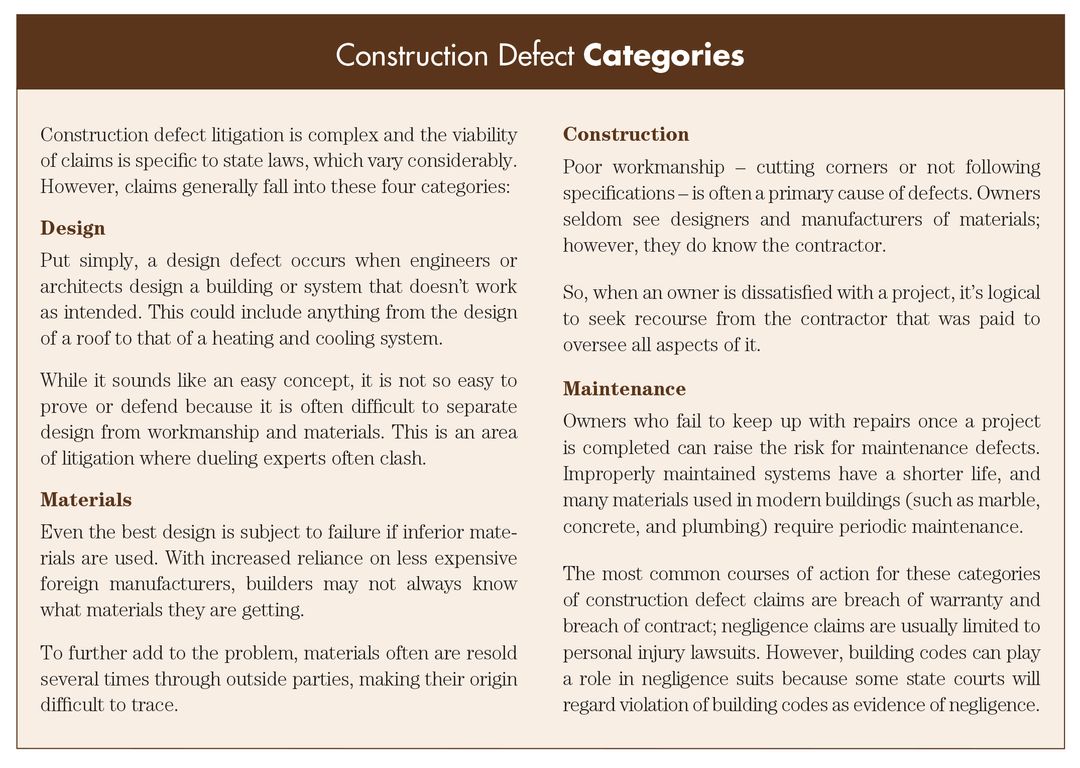As the construction industry rebounds, construction defect litigation may also increase. CFMs can help their companies assess how heavily to invest in a litigation strategy, the value of potential settlements, and the viability of claims.
Should construction defect litigation arise, CFMs should stay informed of developments in this area and help their companies implement best practices to reduce the opportunities for expensive problems to emerge over the long term.
Evolving State Laws
Construction defect laws were originally enacted to assert the rights of property owners who dealt with unscrupulous or unresponsive builders. The purpose of any such consumer protection is to find the right balance that provides a reasonable method of redress without proving onerous to businesses that try to do the right thing.
According to a recent article in The Wall Street Journal, the trend of adjusting construction defect laws among some states has resulted in frivolous litigation from property owners. One Las Vegas law firm made more than $700 million in settlements and judgments for homeowners since 1995, with $200 million of that going to attorney fees and $100 million to expert witnesses and other costs.
Nevada’s state legislature has since eliminated a provision for the losing side to pay attorney fees and created additional steps for homeowners to work with builders to address defects before a lawsuit can be filed.1
These laws likely will continue to evolve as state legislatures look for the optimum balance of protections for both business and property owners.
Latent vs. Patent Defects
The distinction between a latent or patent construction defect is critical, as it determines when the statute of limitations on a defect begins under a state’s laws – a crucial factor in many construction defect cases:
- A latent defect is one that is not apparent from a casual or reasonable observation of the premises.
- A patent defect is one that should have been observed in a reasonable inspection.
Generally, the statute of limitations for latent defects is triggered from the time the defect was discovered or should have been discovered with the exercise of due diligence, the latter of which can complicate many cases.
Patent defects don’t necessarily have a certain start date, either. Claims can be triggered starting from the date of possession by the owner, the issuance of a certificate of occupancy, completion or abandonment of construction, or completion or termination of a contract.
Some methods for dealing with these uncertainties include setting a company’s record retention period to be at least as long as the statute of limitations and statute of repose, making sure that subcontractors’ insurance is in place for as long as the company is exposed, and having specific insurance requirements for subcontractors to ensure it corresponds to the relevant statutes of limitation and repose.
